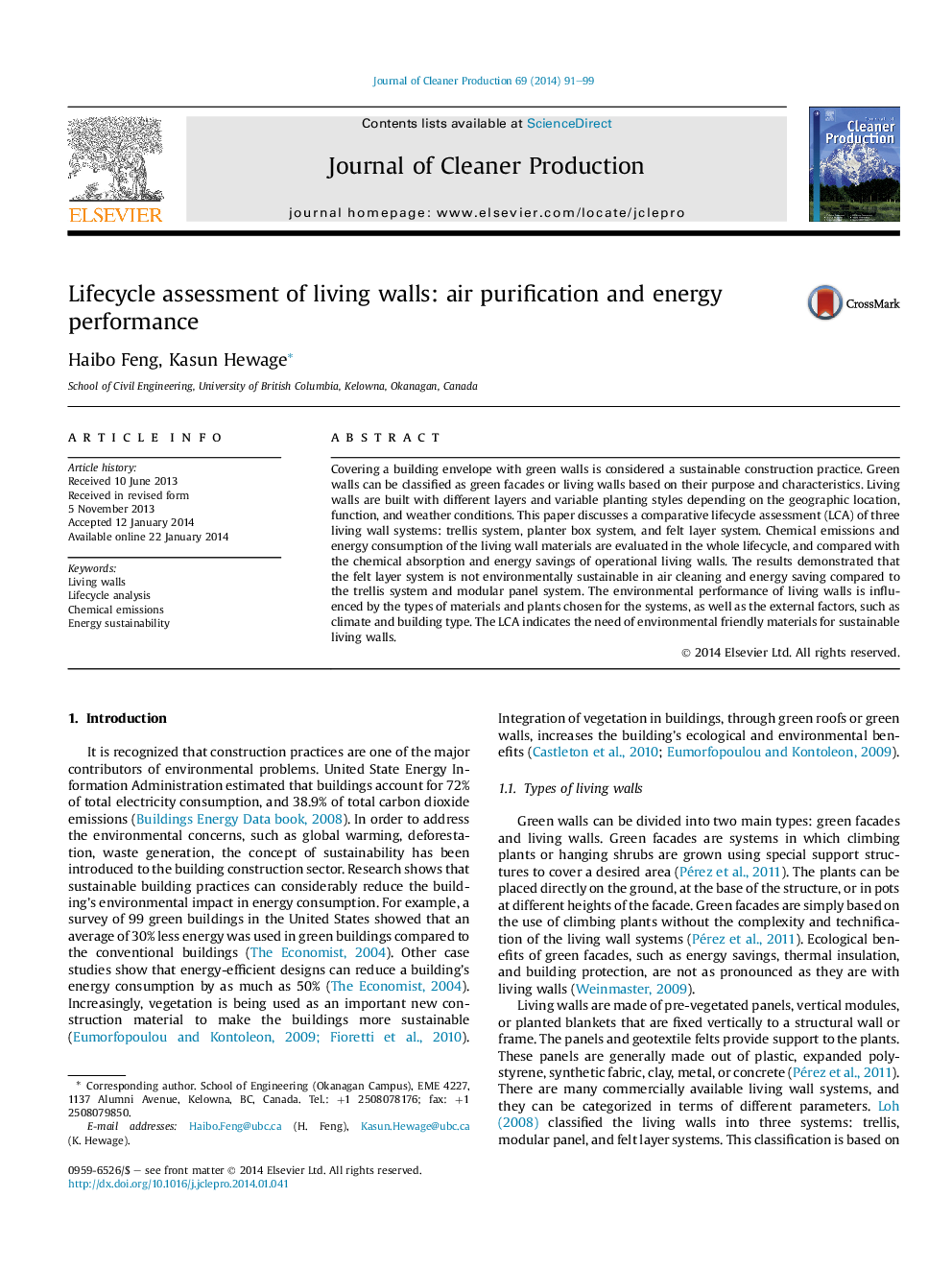| Article ID | Journal | Published Year | Pages | File Type |
|---|---|---|---|---|
| 1745053 | Journal of Cleaner Production | 2014 | 9 Pages |
•This paper analyzes and describes the lifecycle performance of living walls.•We analyzed air purification and energy savings potential of living walls.•Living wall performance in different climatic conditions was evaluated.•The lifecycle analysis proved the importance of using more sustainable materials.
Covering a building envelope with green walls is considered a sustainable construction practice. Green walls can be classified as green facades or living walls based on their purpose and characteristics. Living walls are built with different layers and variable planting styles depending on the geographic location, function, and weather conditions. This paper discusses a comparative lifecycle assessment (LCA) of three living wall systems: trellis system, planter box system, and felt layer system. Chemical emissions and energy consumption of the living wall materials are evaluated in the whole lifecycle, and compared with the chemical absorption and energy savings of operational living walls. The results demonstrated that the felt layer system is not environmentally sustainable in air cleaning and energy saving compared to the trellis system and modular panel system. The environmental performance of living walls is influenced by the types of materials and plants chosen for the systems, as well as the external factors, such as climate and building type. The LCA indicates the need of environmental friendly materials for sustainable living walls.
